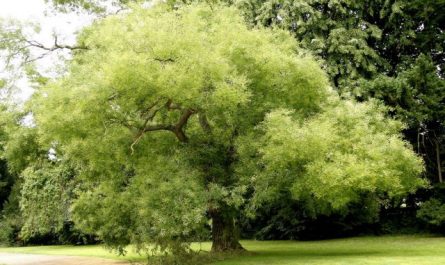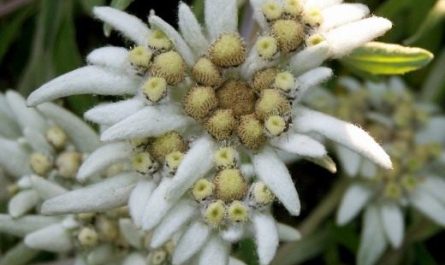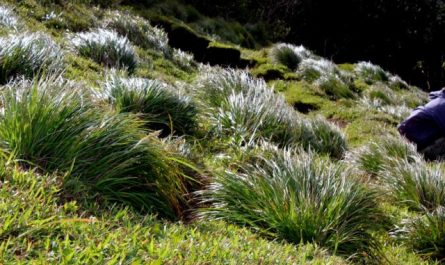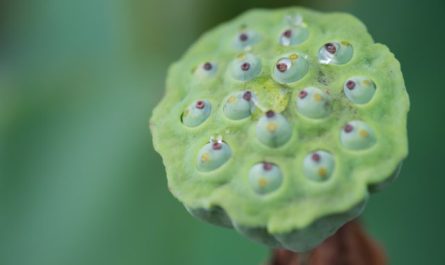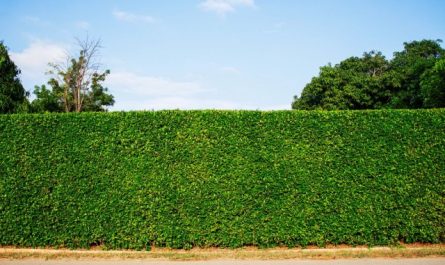A lawn can occupy a significant area or decorate a very modest piece of land, but without a green lawn, a garden is not a garden. However, a lawn made of cereal crops requires constant attention, knowledge, care skills and regular mowing. Without care, such a lawn will never look “like in the picture” or at least more or less well-groomed. For this reason, many refuse a lawn, or, having tried it, feel dissatisfied with the idea of having one. This is natural if the time spent is not worth the result. But if you set a goal, you can find an alternative in any matter, even in organizing a lawn. Meet the new thing in the world of landscape design – microclover. Will it be able to replace a classic lawn, we will figure it out in the article.

Benefits of Microclover Lawn
Microclover is the same clover we are used to, but small. Its height is only 4-6 cm (depending on growing conditions). Compared to other types of clover, reaching a height of 30-60 cm, this one is tiny. In general, it is not for nothing that it is called dwarf, and this is its main feature. Today, you can find several varieties of low-growing clover on sale, but the most popular new, the most miniature of those available is the Pipolina variety.
However, the small growth of microclover is not its only advantage. There are a number of other characteristics that make it a worthy competitor to grass lawns. Usually, their combination determines the choice, namely:
- low carpet height;
- the ability to maintain a green appearance all year round;
- dense growth and natural competitiveness against broadleaf weeds;
- undemanding to frequent watering;
- the ability to saturate the soil with nitrogen;
- high resistance to trampling;
- good tolerance to shade;
- ability to tolerate low mowing, up to 3-4 cm;
- excellent compatibility with lawn grasses;
- ability to self-heal;
- can be sown throughout the season;
- high resistance to diseases.
It is these features of microclover that determine its low maintenance. There is no need to mow such a lawn constantly, it is not tall anyway. It can be mowed either once a month or twice a season. There is no need to constantly feed it either – it is a source of fertilizers itself. There is no need to fight diseases – it does not get sick. You do not need to water it as often as a cereal – it is quite drought-resistant and will remain green even in hot weather.
You can walk on a lawn made of microclover. And even if bald spots form due to high loads, clover quickly fills them again thanks to its creeping shoots that root in the nodes and self-seeding. But it is also resistant to animal urine, so it is especially suitable for those who have a dog.
This type of clover can be sown in any soil, in almost any climate, throughout the season. However, it is better to do this before the end of August, and in warmer climates – before the end of September (one or two months before winter), so that the plants have time to take root well before the cold weather arrives.

Disadvantages of Microclover Lawn
But a microclover lawn has its own disadvantages. Although, it depends on how you look at them.
The first thing that opponents of such a lawn pay attention to is flowering. Many are afraid that, walking on flowering clover, you can step on a bumblebee or a honeybee. This is true. But, unfortunately, bees have become rare guests in our gardens today, just like bumblebees. And especially if the lawn is not intended for children to play on, there is no point in being afraid of them. In addition, flowers can be cut off by regular mowing. However, if you leave them, at least at the end of the season, the seeds will fall out onto the lawn, and you will not have to renew it – it will renew itself.
By the way, in landscape design, the flowering of microclover is considered one of its main advantages. It blooms with varying intensity, but constantly, throughout the summer.
Secondly, the cost. It is believed that a clover lawn is an expensive option. But the truth is that if you buy seeds not in a garden center, but in a specialized store, their cost can be three times lower. Plus, we add the lack of constant fertilizing, without which a grass lawn is not able to recover in the spring and after regular mowing. Less watering and mowing – and the cost of microclover becomes the same as a traditional grass lawn.
Monotony. This is another complaint about the clover lawn. But only those who have seen it exclusively in pictures. In fact, thanks to the constant flowering and curly airy green cushion of three-bladed clover leaves, a lawn made of microclover can rather be described as gentle, a little naive, reminiscent of childhood, but not boring.
All these characteristics visually erase the boundaries of the lawn and conceal the strict forms of the area, which is a big plus if the area is intended for recreation.

What herbs can microclover be mixed with?
Microclover tolerates repeated mowing well, so it can be mixed with any grass. In this case, one of the best options is a percentage of 50×50. In addition to the fact that such a lawn looks more interesting, clover also feeds cereals, thanks to its properties to provide the root layer of soil with nitrogen.
Such lawns are considered more economical, they are fed with nitrogen fertilizers only in spring and early summer. They are more resistant to trampling and less susceptible to diseases. For this reason, they are used not only in park areas with intensive loads, but also on football fields.
The classic of this option is still a mixture of microclover and bluegrass. Growing in interspersed spots, such a lawn is very gentle and exactly matches the natural style. For many, it is associated with naturalness and is considered the most interesting of the possible solutions.

The intricacies of sowing a lawn from microclover
The rules for organizing a microclover lawn are no different from a cereal lawn – level the surface, scatter seeds over it, lightly rake them into the soil, carefully roll and water. But further care is somewhat different.
It is very important not to skimp on seeds from the start. Clover seeds are very small, and it seems that simply sprinkling them on the ground with your hand is enough. But if you sow the seeds infrequently, weeds will also grow along with them, which will compete for water and nutrition and force you to constantly mow and weed the lawn. Therefore, it is important to follow the seeding rate indicated on the package, and for ease of sowing, the seeds can be mixed with sand.
In addition, it is necessary to stretch the string, marking squares that allow for gradual, even and accurate sowing. The best sowing option is considered to be double (crosswise) when the seeds are sown in one direction and then crosswise.
If you already have a lawn on your property and you want to see clover in it, clover seeds can be sown directly into the existing grass at a rate of 1-2 kg per hundred square meters.
Clover does not always sprout quickly. It is stated that shoots can be expected already on the 6-7th day after sowing, but it often begins to sprout after two weeks. Here everything depends on the freshness of the seeds, sowing time, weather conditions and the quality of the soil.
The main scourge of clover germination, as my practice has shown, are, oddly enough, ants. Sometimes you may not wait for shoots at all – ants collect clover seeds and drag them away to their storage facilities. And if you dig up the entrance to an ant house, you can often find a whole pantry of these seeds. It is necessary either to frequently and regularly irrigate the area until the seeds grow up and are no longer interesting to the ants (plus the constant “rain” interferes with their work), or to poison the pests.
At first, you can’t walk on microclover. It needs to strengthen, so it should be protected from dog walks, children’s games and other stresses. But two months after sowing, the lawn can be used to its full potential.


Caring for a Clover Lawn
While the clover is sprouting and growing green mass, it needs nitrogen fertilizers and regular watering. In hot climates, after sowing, it needs to be watered up to three times a day, always by sprinkling, so as not to wash away the seeds. After the shoots appear, watering can be reduced, and then make sure that the soil is only slightly damp. And the older the plants, the less often they are watered. If watering is not reduced, or the weather begins to spoil the clover with constant rain, it will grow higher than the stated height.
A freshly sown lawn will not look like a smooth carpet, as some seeds will sprout a little earlier, others a little later, some bushes will receive more nutrition. Therefore, as soon as the clover reaches 6-8 cm (after fertilizing, it will start to grow and become higher than expected), it must be cut twice (as it grows) to a height of 3-4 cm. After such mowing, the surface of the lawn will level out, settle and become compacted. Then the clover lawn is either mowed once a month (to the same height), or twice a season, or not touched at all – it’s up to you.
To support the lawn after winter, especially if it is a mixture of clover and cereals, it will not hurt to feed it with nitrogen fertilizers in the spring and early summer. In summer, a clover lawn does not need nitrogen fertilizers. However, it can be periodically fed with phosphorus, potassium and microelements. And if you add iron chelate, the clover acquires a smart bright green color.
Every three years, it is recommended to renew the clover lawn by sowing seeds. This can be done on an existing lawn, directly into the grass. But if the lawn is not mowed, it reseeds itself and does not need additional renewal.






